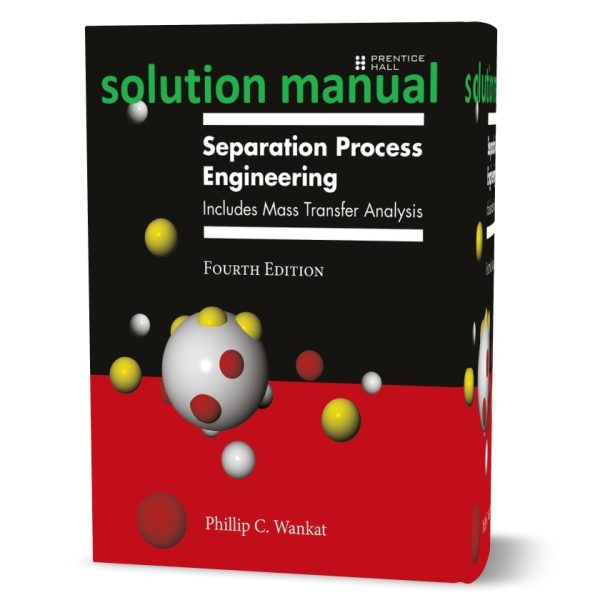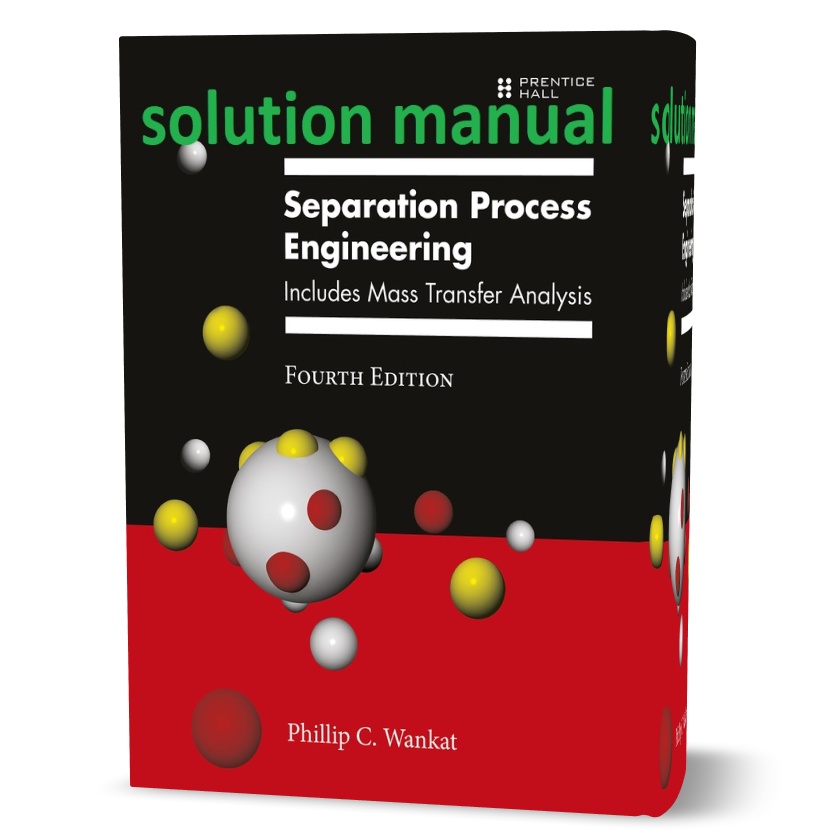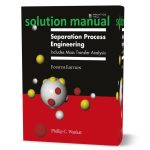separation process engineering phillip c. wankat 4th edition solutions manual
Original price was: $12.00.$10.00Current price is: $10.00.
Published: Pearson 2016
Edition: 4th
Pages: 530
Type: pdf
Size: 19MB
SM Content: Solution Manual for Separation process engineering by Wankat provided officially and covers all chapters of the textbook (chapters 2 to 19). There is one PDF file for each of chapters. Surely check the sample before the purchase.
Solution Sample: sample file
- Description
- Reviews (0)
Description
Description
Since Download free separation process engineering phillip c. wankat 4th edition solutions manual | answers and solution in pdf format all chapter separations are ubiquitous in chemical plants and petroleum refineries, chemical engineers must be familiar with a variety of separation methods. This chapter introduces the importance of separations, the concept of equilibrium, mass transfer, and problem-solving methods. Why does chemical engineering require the study of separation techniques? Because separations are crucial in chemical engineering. A typical chemical plant is a chemical reactor surrounded by separators, as diagramed in the schematic flow sheet of Figure 1-1. Raw materials are pre purified in separation devices and fed to the chemical reactor; unreacted feed is separated from the reaction products and recycled back to the reactor. Products must be further separated and purified before they can be sold. for download solutions manual click here.
separation process engineering phillip c. wankat 4th edition solutions manual
This Download free separation process engineering phillip c. wankat 4th edition solutions manual | answers and solution in pdf format all chapter type of arrangement is very common. Examples for a variety of traditional processes are illustrated by Biegler et al. (1997), Chenier (2002), Couper et al. (2005), Matar and Hatch (2001), Shreve and Austin (1984), Speight (2002), and Turton et al. (2003), whereas recent processes often are shown in Chemical Engineering magazine. Chemical plants commonly have from 40% to 70% of both capital and operating costs in separations (Humphrey and Keller, 1997).
Since separations are ubiquitous in chemical plants and petroleum refineries, chemical engineers must be familiar with a variety of separation methods. We will first focus on some of the most common chemical engineering separation methods: flash distillation, continuous column distillation, batch distillation, absorption, stripping, and extraction. These separations all contact two phases and can be designed and analyzed as equilibrium stage processes. Several other separation methods that can also be considered equilibrium stage processes will be briefly discussed. Chapters 17 and 18 explore two important separations—membrane separators and adsorption processes—that do not operate as equilibrium stage systems.
New to this:
The Download free separation process engineering phillip c. wankat 4th edition solutions manual | answers and solution in pdf format all chapter equilibrium stage concept is applicable when the process can be constructed as a series of discrete stages in which the two phases are contacted and then separated. The two separated phases are assumed to be in equilibrium with each other. For example, in distillation, a vapor and a liquid are commonly contacted on a metal plate with holes in it. Because of the intimate contact between the two phases, solute can transfer from one phase to another. Above the plate the vapor disengages from the liquid. Both liquid and vapor can be sent to additional stages for further separation.
Assuming that the stages are equilibrium stages, the engineer can calculate concentrations and temperatures without detailed knowledge of flow patterns and heat and mass transfer rates. Although this example shows the applicability of the equilibrium stage method for equipment built with a series of discrete stages, we will see that the staged design method can also be used for packed columns where there are no discrete stages. This method is a major simplification in the design and analysis of chemical engineering separations that is used in Chapters 2 to 14.




Reviews
There are no reviews yet.